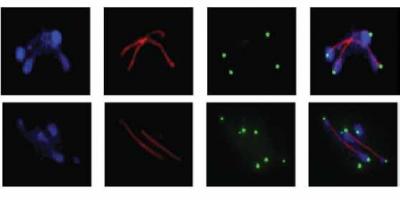
Our group works to understand the molecular mechanism of segregation of chromosomes and the extra-chromosomes during cell division using well known eukaryotic fungal model, Saccharomyces cerevisae and the most prevalent fungal pathogen, Candida albicans. We also work on epigenetics mechanism to understand how genome stability and morphogenesis in C. albicans can be influenced by this.Faithful chromosome segregation is the key to maintain genome stability. Error in this process can lead to generation of aneuploidy which is a hallmark of cancer, spontaneous abortion and developmental disorders. Among the players, a multi-protein complex called kinetochore that forms at the centromere of a chromosome and links chromosome to the microtubule spindle, plays a pivotal role in the process of accurate chromosome segregation. Kinetochore acts as a hub controlling multiple events of chromosome biology including the dynamics of chromosome movements that occur distinctly during mitosis and meiosis. In our study, we showed for the first time that the kinetochore organisation varies from mitosis and meiosis that may be relevant in controlling two distinct modes of chromosome segregation. We have identified a novel role of kinetochore in suppression of deleterious multi-polarity in meiosis. We are interested to further investigate the organisational difference between mitotic and meiotic kinetochores. We are in the process of elucidating contribution of other players in chromosome segregation. S. cerevisiae is one of the rare few eukaryotes that harbours free living plasmids within its nucleus as an extra-chromosomal material. This is a remarkable paradigm of molecular parasitism as the plasmid does not appear to confer any selective advantage to the host. Importantly, the way it persists within the host resembles the way viral DNA resides within the mammalian host as episomes which fuels the study of the mechanism of its faithful
partitioning within the host. We have identified microtubule associated proteins (MAPs) as one of the host factors that promotes its stability. We have found an intricate network of functions among the plasmid encoded proteins that also aids in accurate portioning of this plasmid during cell division. The success of C. albicans as the most prevalent human fungal pathogen largely resides on its ability to exhibit genome plasticity and to undergo morphogenic switching which appears to be determined genetically and epigenetically, respectively. We show that shugoshin and chromatin remodeling are two important genetic and epigenetic players, respectively with a prospect of using these to develop anti-candida drug.
Prof. Santanu K Ghosh
